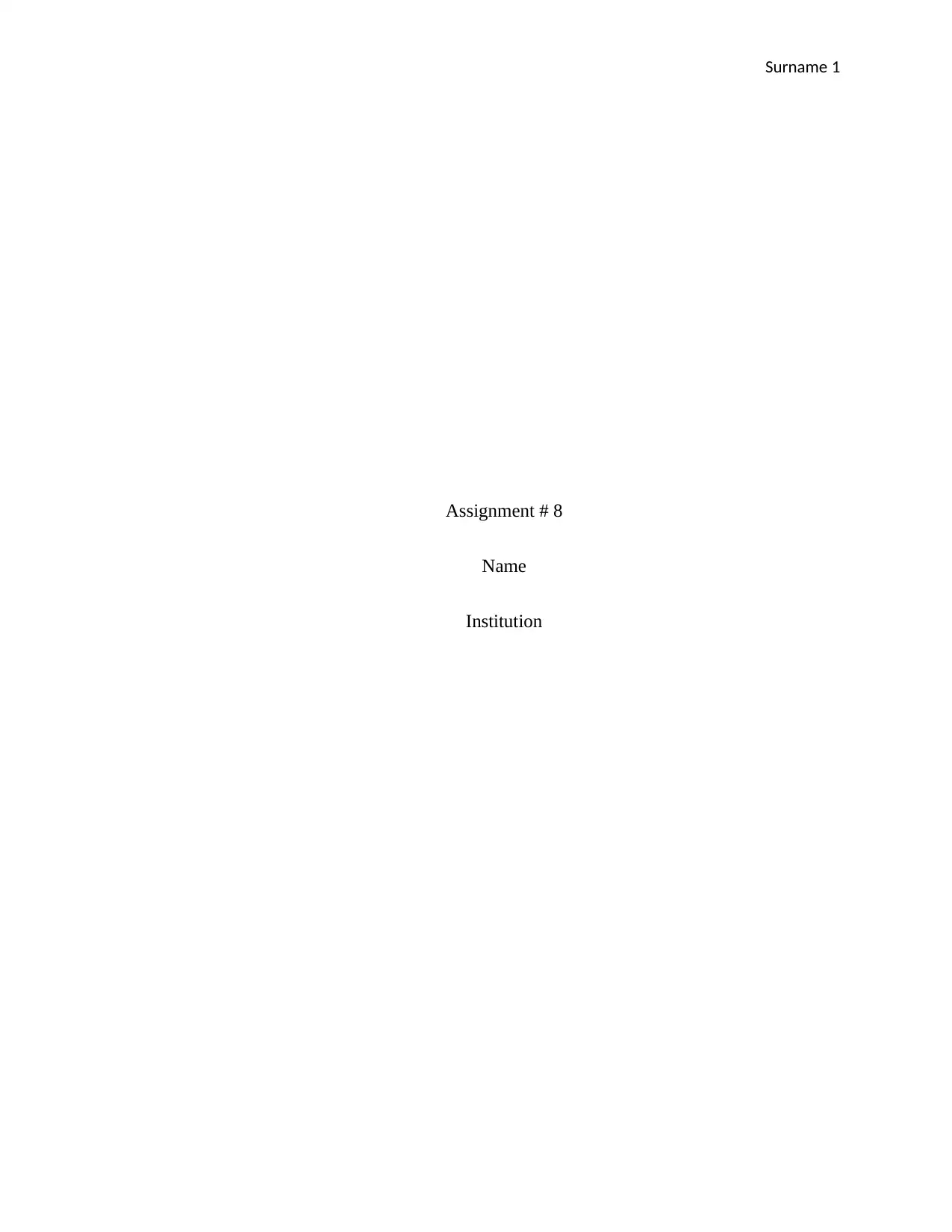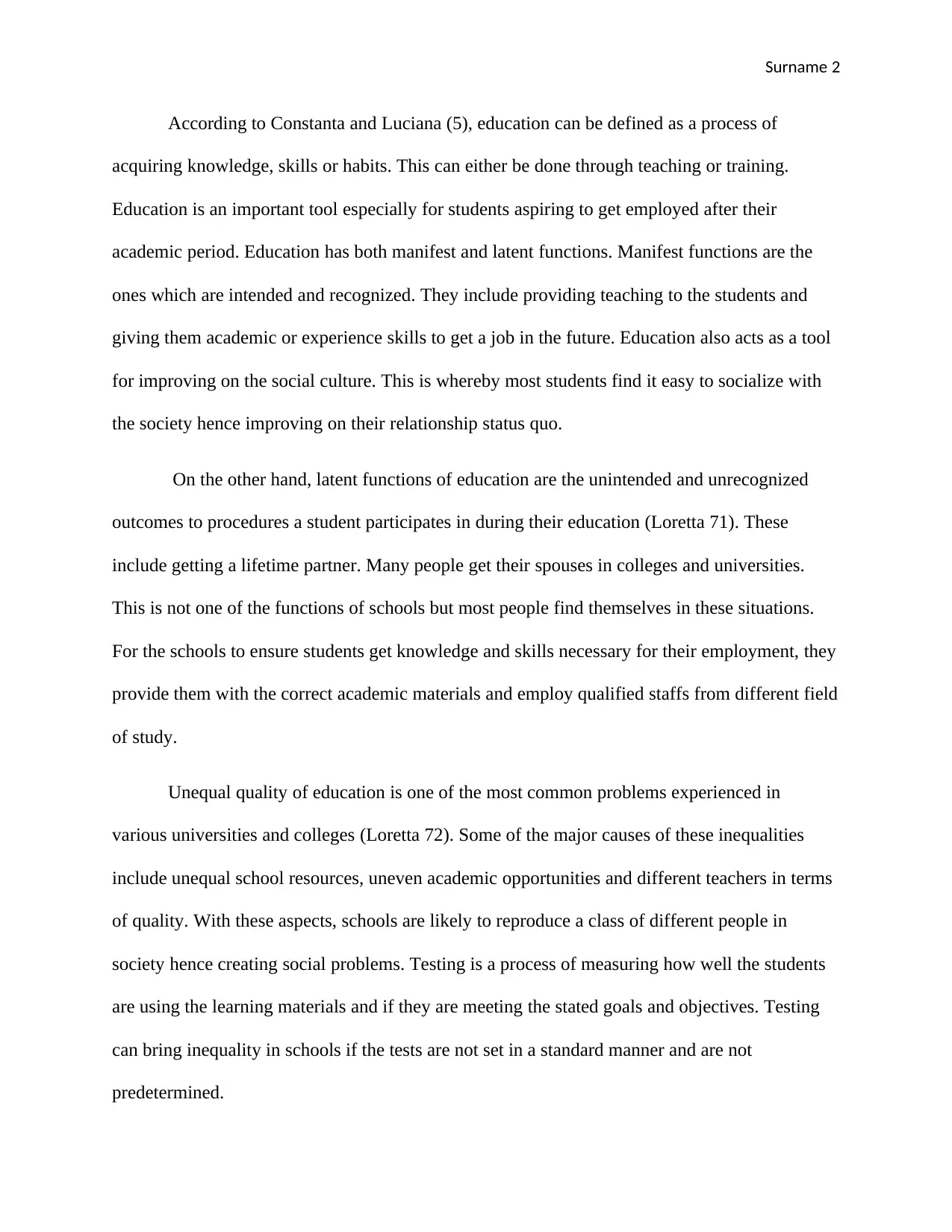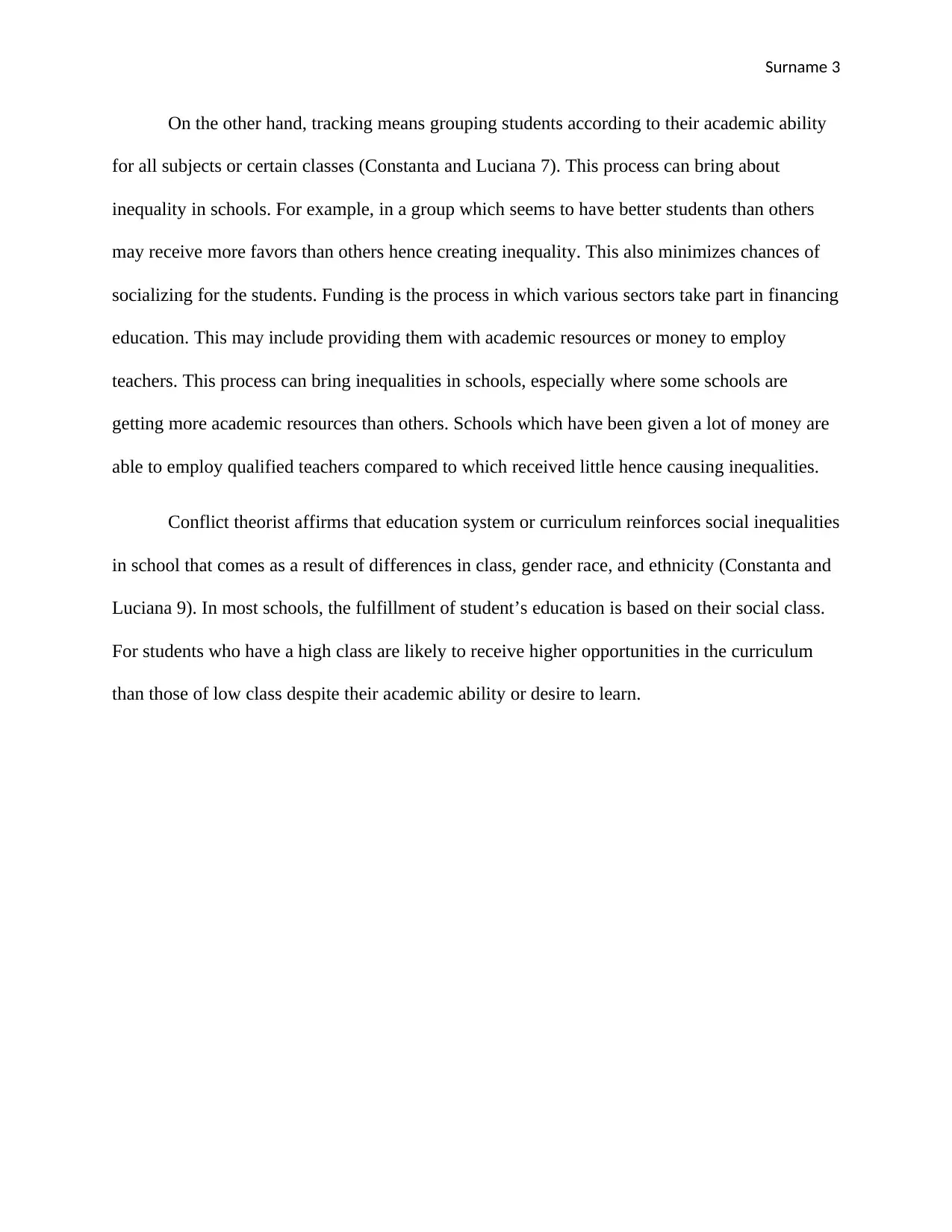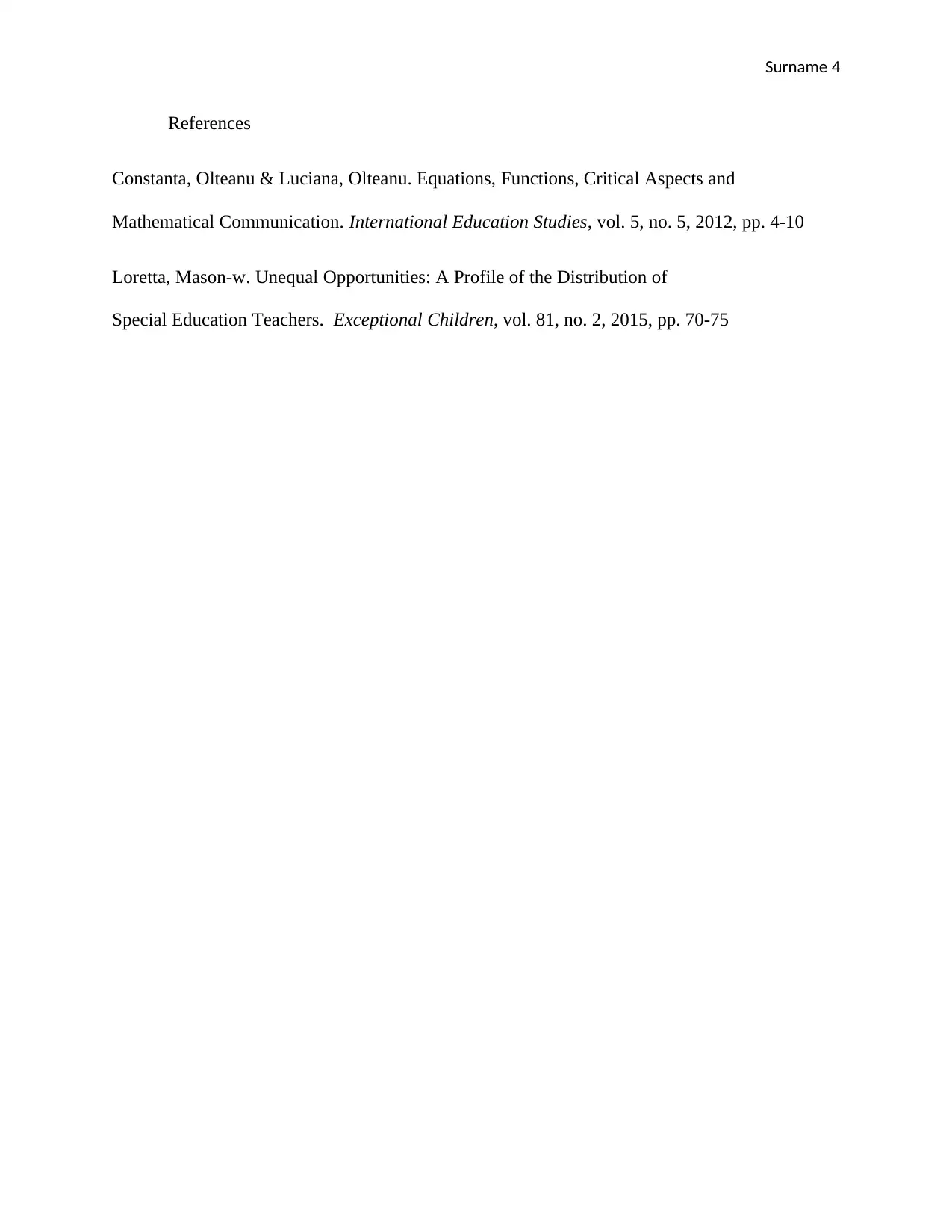Analyzing Education's Role in Social Inequality: A Comprehensive Study
VerifiedAdded on 2023/05/29
|4
|644
|132
Essay
AI Summary
This essay examines the multifaceted relationship between education and social inequality. It explores both the manifest and latent functions of education, highlighting how these functions contribute to societal stratification. The essay delves into the concept of unequal opportunities within the education system, discussing how factors such as school resources, academic opportunities, and teacher quality can exacerbate inequalities. It further analyzes the impact of testing and tracking on perpetuating disparities, examining how these practices can create and reinforce social class divisions. The role of funding in exacerbating inequalities is also discussed. The essay references key sociological concepts and theories, including conflict theory, to provide a comprehensive understanding of how education can both reflect and reproduce social inequalities, ultimately affecting students' educational experiences and future opportunities. The essay concludes by emphasizing the complex interplay of these factors in shaping educational outcomes and social mobility.
1 out of 4











![[object Object]](/_next/static/media/star-bottom.7253800d.svg)